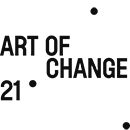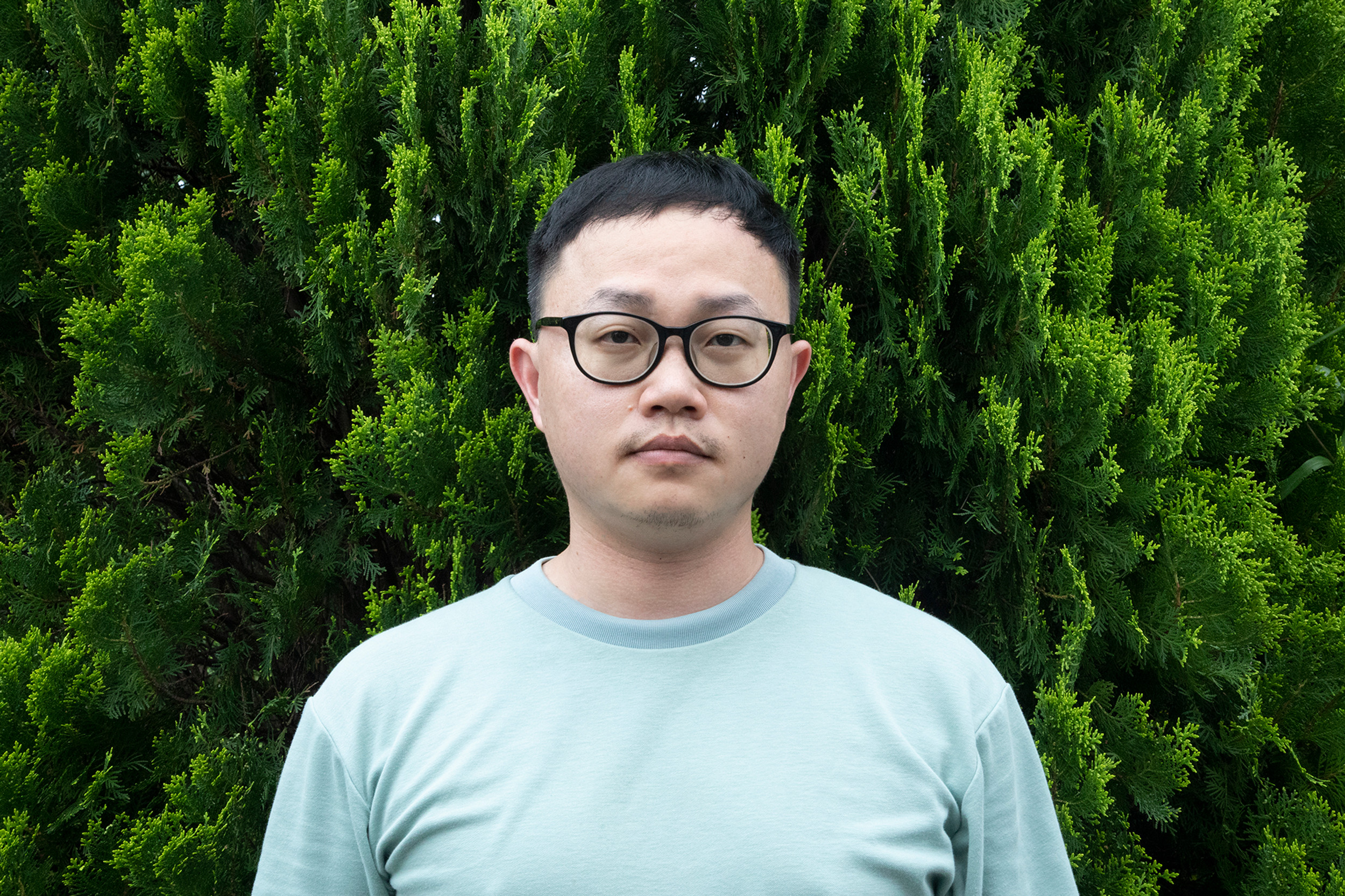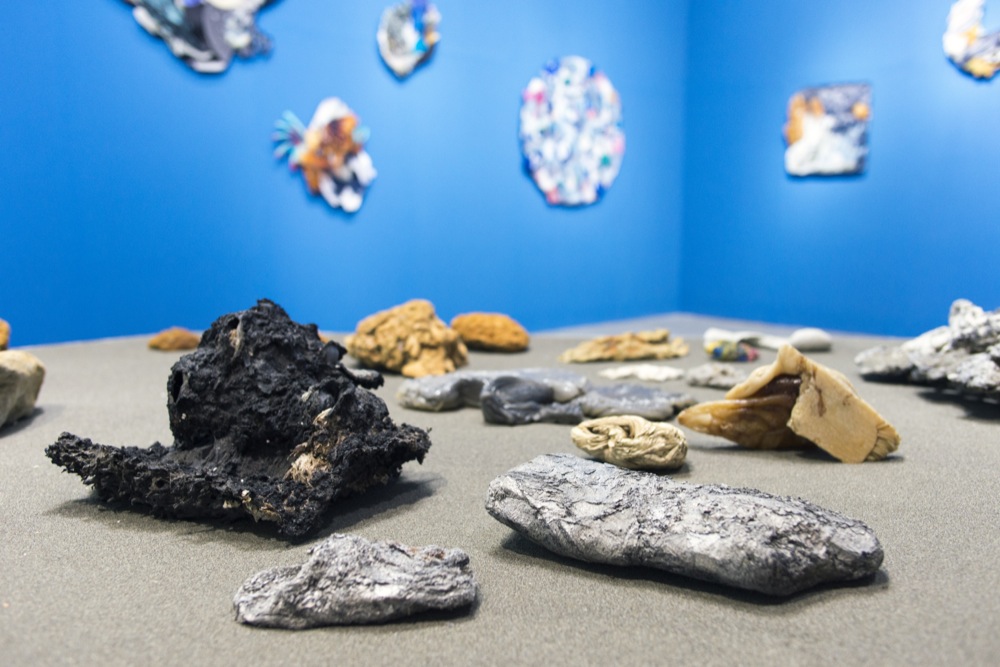Chuan Lun Wu is a contemporary artist born in Tainan (Taiwan) in 1985. He lives and works between Tainan and Berlin.
Alice Audouin: You are from Taiwan, a country that has experienced huge environmental and industrial transformations.
Chuan Lun Wu: I grew up in Tainan, a city in southern Taiwan. Since I was young, Taiwan has been known as an important global production base. Today, “Made in Taiwan” products are found all around the world. However, this has come at a cost to the environment and people’s quality of life. For example, in the community where I grew up, many people’s homes were located right next to factories, and sometimes their house itself is the factory, resulting in an unpleasant living and working environment. Despite this, such practices were tolerated, and even encouraged, in the pursuit of economic development. Although Taiwan’s manufacturing industry has gradually shifted towards High-Tech and High-Value-added development, some slower-to-upgrade industries still exist in certain neighbourhoods. One of my works, JTC (2012-2015), was inspired by this background. The work features a series of photographs of plastic containers that derive from factories but are used as potted plants by locals to decorate their doorfronts. This may seem unsavoury, but it showcases the pragmatic, yet romantic, character of the Taiwanese people.
Tell us more about your last piece, The Test, that deals with Taiwan’s rapidly developing photovoltaic industry.
The Test was commissioned for the Tainan Yuguang Island Art Festival. Initially my focus was on the island’s surrounding coastal areas, where I discovered the policy in recent years of covering a large number of fishponds or farmland with photovoltaic (solar) panels. The background to this policy is related to Taiwan’s active pursuit in favour of sustainable energy, in order to reduce the country’s reliance on nuclear and imported coal and gas.
However, behind it is also Taiwan’s technology manufacturing industry. Semiconductor foundries and technology product-assembly processes require enormous energy consumption, which inevitably causes considerable carbon emissions. However, customers now want to purchase environmentally-friendly products. Therefore, technology brands require these foundries to increase the proportion of green energy, in order to improve their public image.
This pressure and its consequences are ultimately passed on to the local people. The excessive installation of photovoltaic panels not only interferes with the landscape and traditional life but also causes damage to aquaculture and agriculture and creates environmental disturbances. For example, the organisms that used to visit the fields, or the migratory birds that commonly feed in the fishponds, are now very much under threat.
You blur the frontier between what is natural and what is artificial, placing yourself as a mediator between these two worlds.
I grew up in a typical suburb in Taiwan rather than a natural environment. The environmental conditions that shaped me were always more artificial than natural, and I can’t say I genuinely dislike it. As an urban animal, I cannot say that I love nature more than the “civilised” world. This makes me sceptical of the binary view that nature is good and civilisation is evil. My creations often question both sides of this binary, and I try not to favour or romanticise one side too much. Occasionally, I find a clear intersection between the two, which makes me believe that perhaps art is about reconciling and mediating between these two divided worlds.
In my 2011 work National Highway 1 National Park, I observed a highway interchange located in the heart of the city Taichung. Due to the large number of trees planted in the interchange to buffer its impact and purify the air, it unexpectedly became a habitat for local birds, and the birds thrived there better than in other city spaces, including parks. Although this was accidental, it reminded me of the concept of “national parks”, and that the idea to draw a line between the natural and non-natural is just absurd, especially in the context of the Anthropocene. Similarly, Coast Mining, which I created for the 2014 Taipei Biennial, was inspired by my discovery of large quantities of weathered plastic waste on the beach that resemble stones.
Why did you choose to do No Country for Canine, a project about German Shepherds, a dog breed present in both Taiwanese and German history? (see article link)
The German Shepherd Dog embodies the history of human dominance over animals, a relationship that is now being reassessed in our current ecological times. This series began with the vintage ready-made ceramics in the shape of dogs that were made in the former days of Taiwan. I am a big collector of these ceramics and began to wonder why there were so many German Shepherd Dogs in particular. Later, when I began my residency at Kunstlerhaus Bethanien in Berlin, I studied the history of these dogs and was surprised by how a breed of dog could be so ‘designed’. Shortly after, these dogs were integrated into the German army, and when the Japanese modernised their own military, inspired heavily by the Germans, they also introduced the German Shepherd to the Taiwanese people as a war dog. Due to this historical background, the dogs were for a long time seen in Taiwan as a symbol of the elites or authority, and even today some of this image still remains.
Dogs, as natural objects that are no longer entirely natural, already have a unique identity. There are many examples of dogs being modified by human ideology and being used as a social tool. Besides the military and other practical uses, modern ‘dog agility’ competitions have also caught my interest. In this joint activity between dogs and humans, a delicate relationship is created based on mutual accommodation and dependence. I see dogs as a “living clay” constantly being shaped by the human world.

When Collecting Becomes Breeding, No Country for Canine, Chuan Lun Wu, 2012-2019 © Courtesy of the artist
What is your next project, exhibition or research piece?
My next exhibition will be at the Arles Photography Festival in July, co-hosted by the Manuel Rivera-Ortiz Foundation and the Centre Culturel de Taïwan in Paris. On the theme of ‘plants,’ I will present the JTC project, and I will also undertake a residency at the MRO Foundation in Arles before the start of the show. I’m planning to integrate the potted landscapes of Arles’ old neighbourhoods into my work during this residency.
Another ongoing project of mine is about ‘oology’ – the study of bird eggs and nests. Two years ago, during my residency at the Delfina Foundation in London, I visited the Natural History Museum with the help of the foundation. At that time, the curator of the NHM showed me several bird nests that were labelled as being from Formosa (the old name for Taiwan), but the context of these nests has been lost for some historical reasons. Therefore, I have started thinking about these bird nests and how to tell their stories.
Finally, I have a long-term book project about Taiwanese ceramics from the period dating from the 1940s to the 1990s. These ceramics were mainly exported and made in styles that were popular in Western markets, but they gradually transformed in Taiwan due to technical gaps or the infusion of Taiwanese aesthetics. I see them as an Asian variation of the Western ceramic tradition. Currently, I share them on Instagram (@toss.slot.crack) and I plan to publish and exhibit them in the future.
In conversation with Alice Audouin
March 2023
Cover : Chuan Lun Wu Photo © Courtesy of the artist
To know more about Chuan Lun Wu: www.wuchuanlun.com
Subscribe here to our newsletters



